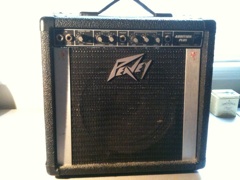On “Ask This Old House” there is a semi-regular segment where one of the hosts brings in an odd looking tool and has the others guess what it is. The first is always the joke option. The second is something closer to useful. When the intended use is revealed it’s usually pretty cool but the other ideas, including the ones we armchair contractors come up with, were pretty neat too. When the question isn’t “how do I use this?” and is restated as “how might I use this?” everything changes. It gets interesting.
When digital audio first became available to me I had a great time opening up an editor and beating up sounds. Playing them backwards. Speeding them up. Slowing them down well below their sample rate. Running a reverb and removing the source (dry) component from the output. In all of these operations there were unpredictable outcomes. While one might guess that forcing the program to stretch a sample out would distort it, the way in which it was finally broken and sounded was up to the combination of the signal itself and other factors that weren’t easy to chart – especially for me at that time. In each session I found something new.
As my understanding increased and I had a chance to write some software of my own, I noticed that I was less and less excited. I knew how things were “supposed” to be used and as a result I started only using them in that way. But every now and then, something happens that illuminates that path of blissfully ignorant discovery again.
Over the weekend I used my iPhone to capture a video of my son playing in the water at the beach. It was just over a minute long. I tossed it into iMovie and put a song I just finished over top of it. The song was about 3:30. So I told iMovie to make the video as long as the audio. Then I told it to stabilize the picture. I had no idea what that would do. It turns out that it analyzes the video and drops out frames where the camera jerks around in an effort to make things appear smoother. With the video already slowed, these dropped frames stylized the movie in a beautiful way. Having clicked my way around an application I’ve used maybe five times, I sat back and watched my work in action. The way that the picture lined up with the music was wonderful. The simple actions and the tension of the music seemed to blend and almost look as though it had been choreographed.
The point? Had I really wanted to stabilize the video, I’m sure I would have felt that it didn’t quite do the job. I might have reshot it entirely. I might have edited it in some way. I certainly would have redone the music to match better with the action. But because none of it was intended and I wasn’t predicting an output, I got something that was aesthetically pleasing.
Ignorance is usually a bad or dangerous thing. Yet being able to access that part of the mind that is a novice filled with curiosity and the willingness to play is essential. I’m anxious to beat up some sounds. To plan a little less. To play a lot more.
